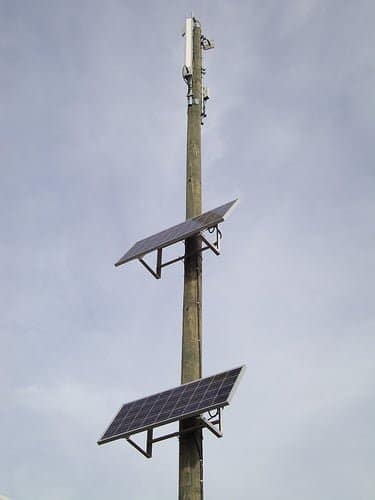 Some resources are easy to keep tabs on. They are located conveniently close to monitoring equipment and power supplies, which are, in turn, easily integrated into your facility’s management systems. Press a button or click a mouse, and all you need to know pops up on a screen. It’s the ideal scenario, really.
Some resources are easy to keep tabs on. They are located conveniently close to monitoring equipment and power supplies, which are, in turn, easily integrated into your facility’s management systems. Press a button or click a mouse, and all you need to know pops up on a screen. It’s the ideal scenario, really.
Other resources, as many of you are keenly aware, are much more difficult to monitor. And, like Tolstoy’s unhappy families who are each unhappy in their own ways, each difficult monitoring scenario presents its own challenges. You might have one resource that is physically isolated from the majority of your resources. Or, perhaps the majority of your resources are isolated from each other. Or maybe power isn’t an issue, but network or control system access is. Or there isn’t any physical space for new cables or conduit. Each is difficult in its own ways.
One technology that continues to find new ways to overcome these difficulties is wifi radio. It may not solve all of your problems (yet), but with its flexibility, it might solve more than you realize.
One of wifi radio’s inherent flexibilities is the scope of its integration in your process or monitoring system. It can be used for point-to-point communication, as a branch between physically or operationally separate systems, or it can be used to form entire layers of your system.
An example of the former might be a tank farm located several hundred feet, or even a couple miles, from the easiest point of access to your control or monitoring network. A Modbus network might be sufficient to monitor the tanks, but wifi radio could provide the physical connection between that tank farm network and your existing network.
Alternately, wifi radio can be used to create a wireless mesh, which individual sensors and transmitters use for communication with the larger control network. A steel plant in Alabama used wifi radios to upgrade one specific control system within their plant to great success. Rather point-to-point communication, the wifi radios provide large-scale integration.
Distance flexibility is another strength of wifi radio. Most of us have wireless routers in our homes, so we are familiar with the short-range capabilities wifi. Given the right antenna and line-of-sight between points, certain wifi technologies can be used for 30 or more miles. Granted, 30 miles of line-of-sight between two points might be difficult to obtain. But knowing that wifi radio can be configured for that kind of distance means that a point-to-point need measured in hundreds of feet can easily be met by wifi radio.
Most of us think of wifi in terms of internet accessibility for our phones, mobile devices, and laptops without needing a hard-wired connection or cellular reception. And the same can be true for wifi radio, if you put an internet connection at one end. But you don’t have to. As noted earlier, wifi radio can be used merely to provide the physical connection between two points within your private network. The deciding factor: your needs.
Is wifi radio a magic bullet that solves all the problems? No. Does wifi radio provide a large degree of flexibility for remote monitoring? Absolutely. Is wifi radio the right technology for your needs? It could be. Give our Measurement Experts a chance to explore your remote monitoring situations. They have years of experience matching the challenges of various remote monitoring applications to the right technologies.